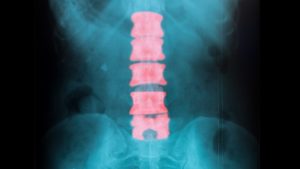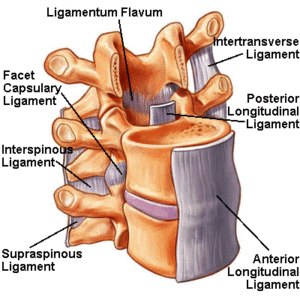Overview
Microdiscectomy is surgery to remove lumbar (low back) herniated disc material that is pressing on a nerve root or the spinal cord camera.
It tends to be done as microdiscectomy, which uses a special microscope to view the disc and nerves. This larger view allows the surgeon to use a smaller cut (incision). And this causes less damage to surrounding tissue.
Before the disc material is removed, a small piece of bone (the lamina) from the affected vertebra may be removed. This is called a laminotomy or laminectomy. It allows the surgeon to better see the herniated disc camera.gif.
Discectomy is usually done in a hospital. You are asleep or numb during the surgery. You will probably stay in the hospital overnight.
What is Microdisectomy?
Microdiscectomy, also sometimes called microdecompression or microdiskectomy, is a minimally invasive surgical procedure performed on patients with a herniated lumbar disc.
The procedure is done under general anaesthesia. You will be unconscious during the entire procedure and unable to feel anything.
After a microdiscectomy, the typical time to a full recovery is about six weeks.
Spinal surgery once meant large incisions, long recovery periods, and painful rehab. Fortunately, surgical advances like the microdiscectomy procedure have improved the process.
Microdiscectomy, also sometimes called microdecompression or microdiskectomy, is a minimally invasive surgical procedure performed on patients with a herniated lumbar disc. During this surgery, a surgeon will remove portions of the herniated disc to relieve pressure on the spinal nerve column.
During the procedure, a small part of the bone over the nerve root and/or disc material under the nerve root is taken out.
A microdiscectomy (also called a microdecompression) is usually more effective for relieving leg pain (also known as radiculopathy, or sciatica) than lower back pain:1-3
For leg pain, patients will normally feel pain relief almost immediately after a microdiscectomy. They will usually go home from the surgery with significant pain relief.
For numbness, weakness, or other neurological symptoms in the leg and foot, it may take weeks or months for the nerve root to fully heal and any numbness or weakness to subside.
As general rule, microdiscectomy is considered a relatively reliable surgery for immediate, or nearly immediate, relief of sciatica from a lumbar herniated disc.
Indications for Microdiscectomy
If a patient’s leg pain due to a disc herniation is going to get better, it will generally do so within about six to twelve weeks of the onset of pain. As long as the pain is tolerable and the patient can function adequately, it is usually advisable to postpone surgery for a short period of time to see if the pain will resolve with non-surgical treatment alone.
If the leg pain is severe, however, it is also reasonable to consider surgery sooner. For example, if  despite nonsurgical treatment the patient is experiencing pain so severe that it is difficult to sleep, go to work, or perform everyday activities, surgery may be considered before six weeks.
despite nonsurgical treatment the patient is experiencing pain so severe that it is difficult to sleep, go to work, or perform everyday activities, surgery may be considered before six weeks.
These are typical reasons for recommending a microdiscectomy:
- Leg pain has been experienced for at least six weeks
- An MRI scan or other test shows a herniated disc
- Leg pain (sciatica) is the patient’s main symptom, rather than simply lower back pain
- Nonsurgical treatments such as oral steroids, NSAIDs, and physical therapy have not brought sufficient pain relief
Why It Is Done?
Surgery is done to decrease pain and allow you to regain normal movement and function.
- You have very bad leg pain, numbness, or weakness that keeps you from being able to do your daily activities.

- Your leg symptoms do not get better after at least 4 weeks of nonsurgical treatment.
- Results of a physical exam show that you have weakness, loss of motion, or abnormal feeling that is likely to get better after surgery.
Surgery is considered an emergency if you have cauda equina syndrome. Signs include:
- New loss of bowel or bladder control.
- New weakness in the legs (usually both legs).
- New numbness or tingling in the buttocks, genital area, or legs (usually both legs).
Traditional Microdiscectomy Surgery Step-By-Step
A microdiscectomy is performed through the back, so the patient lies face down on the operating table for the surgery. General anesthesia is used, and the procedure usually takes about one to two hours.
These steps are typical:
A microdiscectomy is performed through a 1 to 1½-inch incision in the midline of the low back.
First, the back muscles (erector spinae) are lifted off the bony arch (lamina) of the spine and moved to the side. Since these back muscles run vertically, they are held to the side with a retractor during the surgery; they do not need to be cut.
The surgeon is then able to enter the spine by removing a membrane over the nerve roots (ligamentum flavum).
Operating glasses (loupes) or an operating microscope allows the surgeon to clearly visualize the nerve root.
In some cases, a small portion of the inside facet joint is removed both to facilitate access to the nerve root and to relieve any pressure or pinching on the nerve.
The surgeon may make a small opening in the bony lamina (called a laminotomy) if needed to access the operative site.
The nerve root is gently moved to the side.
The surgeon uses small instruments to go under the nerve root and remove the fragments of disc material that have extruded out of the disc.
The muscles are moved back into place.
The surgical incision is closed and steri-strips are placed over the incision to help hold the skin in place to heal.
In a microdiscectomy, only the small portion of the disc that has herniated—or leaked out of the disc—is removed; the majority of the disc is left as is.
Importantly, since almost all the joints, ligaments and muscles are left intact; a microdiscectomy does not change the mechanical structure of the patient’s lower spine (lumbar spine).
After the Surgery
Patients typically stay in the surgery centre or hospital for a few hours after surgery before being released to return home. Depending on the patient’s condition, one overnight stay in the hospital may be recommended.
Following the operation, patients may return to a relatively normal level of activities quickly. Patients are typically encouraged to walk within a few hours of the surgery.
The surgeon will provide home care instructions, typically including medications, activity restrictions, a follow-up care appointment, and other information.
Although surgery for a lumbar herniated disc doesn’t work for everyone, it works well for many people.
A study called SPORT randomly assigned about 500 people to two groups. Some had surgery, and some did not. The study found that after 2 years most people felt better and were able to be active, whether they had surgery or not. People who had surgery were slightly more likely to feel better. But the difference wasn’t big enough to prove that one treatment is better than the other.1
Another study followed about 500 people over 10 years. Some had surgery, and some did not. This study showed that people who started with medium to very bad pain tended to feel better sooner if they had surgery. But after 5 to 10 years, the number of people in both groups who were able to do their daily activities was about the same whether they had surgery or not.
Risks
As with any surgery, there are some risks:
- Surgery doesn’t always work, or it may not work any better than other treatment.
- There is a slight risk of damaging the spine or nerves.
- There is some risk of infection.
- There are risks with anesthesia.
What to Think About?
Discectomy for a lumbar herniated disc may provide faster pain relief than nonsurgical treatment. But it is unclear whether surgery makes a difference in what treatment may be needed later on.
People who have had either standard discectomy or microdiscectomy have reported similar improvements one year after surgery.3
Spinal fusion is a procedure that joins together bones in the back. For the low back (lumbar spine), spinal fusion is controversial and complex and is not commonly done with a discectomy. If a doctor suggests that you get a lumbar spinal fusion with a discectomy, get a second medical opinion to help you decide whether fusion is needed.
A newer form of discectomy using laser beams (laser discectomy) is still in the research stage.
Who Benefits from Microdiscectomy?
A microdiscectomy procedure is up to 95 percent effective at eliminating sciatica pain caused by disc herniation. Sciatica is a pain condition caused by compression of the spinal nerve. This compression is most often the result of a herniated lumbar disc.
As the hernia develops and the damaged tissue extends into the spinal column, it pushes on the nerves. This causes the nerves to send pain signals to the brain. The pain is interpreted to be coming from the legs.
Most cases of sciatica will heal naturally without surgery in a few weeks. If the pain from sciatica lasts more than 12 weeks, you may benefit from a microdiscectomy.
A microdiscectomy is not effective in relieving back pain.
